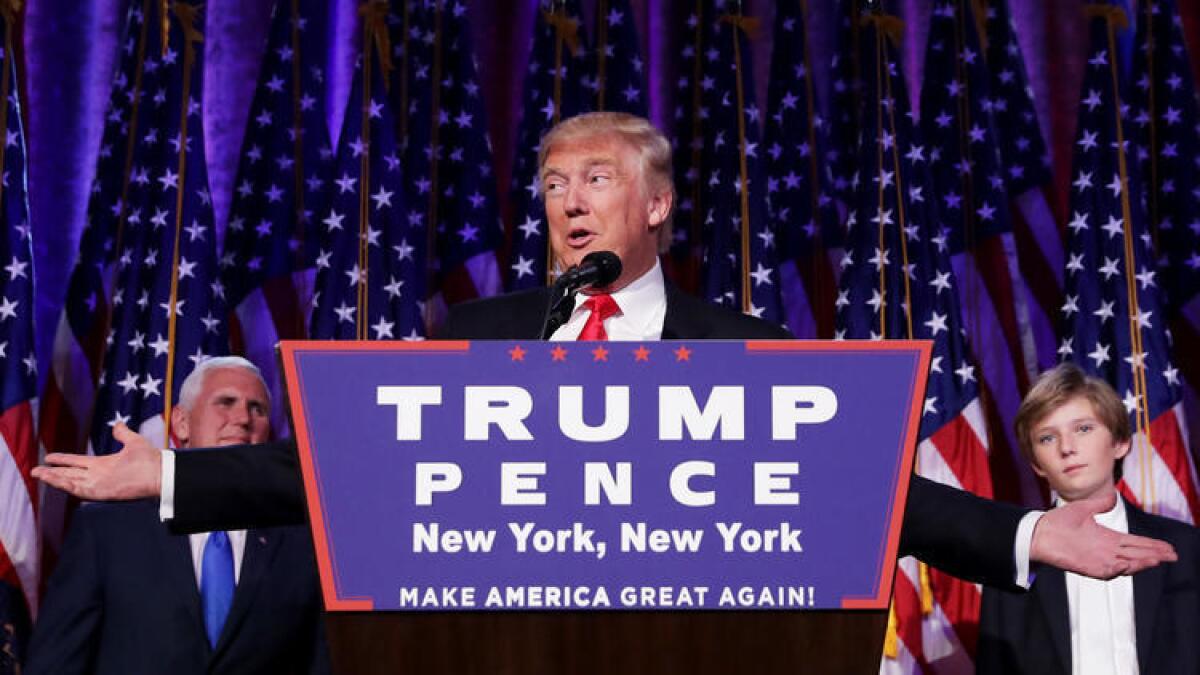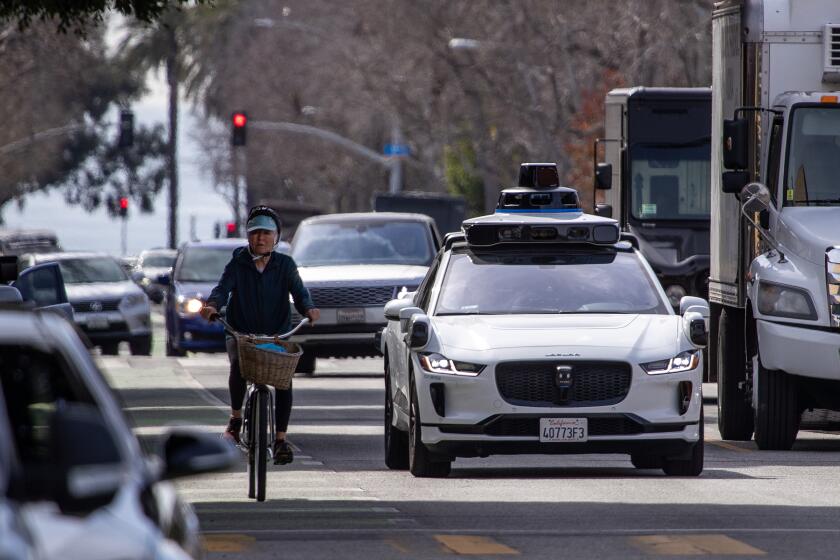5 ways President Trump could affect your student loans

- Share via
President-elect Donald Trump has plans to address college affordability and student debt, though many details remain to be worked out. In an Oct. 13 speech in Columbus, Ohio, he outlined the basics of his views on student debt, tuition rates, administrative “bloat,” income-based repayment and loan forgiveness.
“Students should not be asked to pay more on their loans than they can afford,” he said. “The debt should not be an albatross around their necks for the rest of their lives.”
Trump and the Republican Party didn’t emphasize higher education in their campaign platforms, leaving experts puzzled as to what policies a Trump administration might pursue.
“We won’t know what priorities, if any, the administration has until we see what staff is in and what ideas they put out there,” said Matthew Chingos, senior fellow at the Washington think tank Urban Institute.
Any proposed changes to the current federal student loan system would require congressional backing and action. Here’s what we may be able to expect:
How Donald Trump really won the White House »
1. Income-driven repayment changes are likely
Under Trump’s proposed student loan program, he would cap repayment at 12.5% of a borrower’s income. He did not indicate if this repayment cap would apply to all federal loan borrowers or only for those who apply for income-driven repayment, as is the case now. In the most widely available income-driven repayment plan currently available to student loan borrowers, known as Revised Pay As You Earn, or REPAYE, monthly payments are capped at 10% of a borrower’s discretionary income.
Trump’s proposal would also forgive student loan debt after 15 years of full payments — five years earlier than the current REPAYE options.
2. Private banks — not the government — might issue federal student loans
Trump wants to restore a system in which private banks issue federal student loans, policy director Sam Clovis said in a May interview with Inside Higher Ed. The Republican Party platform also called for the federal government to stop originating student loans.
Private banks used to issue federally backed student loans until 2010, when the federal government revamped the program and began originating all federal student loans through its Direct Loan program. The Obama administration cited billions of dollars in cost savings as a reason for the switch, and used the savings to offer more Pell Grants for low-income students. Today, most new student borrowing comes from federal direct loans, with private lenders servicing the government-issued loans.
3. Students’ prospective future earnings could inform their ‘loan worthiness’
Trump also wants to let colleges have a say in lending decisions and make them share the risk of student borrowing with lenders, according to the Inside Higher Ed article. It would be up to the colleges and banks to decide together which students could borrow student loans, Clovis said. The decision would be based on factors including the student’s major, choice of college and the potential to find a job after graduating.
The idea that colleges should have “skin in the game” by taking responsibility for student outcomes has bipartisan support. For example, Sen. Jack Reed (D-R.I.) introduced a bill in 2015 that would require colleges that accept federal financial aid to share student loan risk with the Department of Education. Chingos says risk-sharing for institutions may also threaten the for-profit college industry, but it’s unclear whether the Trump administration would be sympathetic to for-profit schools.
Trump’s victory ensures a conservative majority on the Supreme Court »
4. College costs could be reduced by limiting administrative ‘bloat’
Trump said in his October speech in Ohio that he would take steps to push colleges to cut tuition costs. If the federal government is going to subsidize student loans, he said, then colleges must be held accountable to invest in their students. If schools do not invest endowment money to reduce costs, Trump said the government may reconsider whether they deserve to keep those endowments tax-exempt.
Trump also said in his Ohio speech that he plans to reduce the “tremendous bloat” in college administration. By reducing unnecessary costs of compliance with federal regulations, he said, colleges would be able to pass the savings on to students in the form of lower tuition.
5. You could use federal financial aid to cover nontraditional education programs
On his campaign website, Trump said he planned to “ensure that the opportunity to attend a two- or four-year college, or to pursue a trade or a skill set through vocational and technical education, will be easier to access, pay for and finish.”
Higher-education programs’ accreditation “should be decoupled from federal financing,” the Republican Party platform said. That may mean that students attending those nontraditional programs could be allowed to pay for the courses with federal financial aid. Currently, only students attending schools that are accredited through the Department of Education can qualify for federal financial aid.
This article was written by staffers at NerdWallet, a personal finance website.
ALSO
Could California keep Obamacare if the law is repealed?
A primer on executive power: What Trump can and can’t do
Fear of a Trump-triggered recession gives way to hope for short-term economic boost
More to Read
Inside the business of entertainment
The Wide Shot brings you news, analysis and insights on everything from streaming wars to production — and what it all means for the future.
You may occasionally receive promotional content from the Los Angeles Times.










